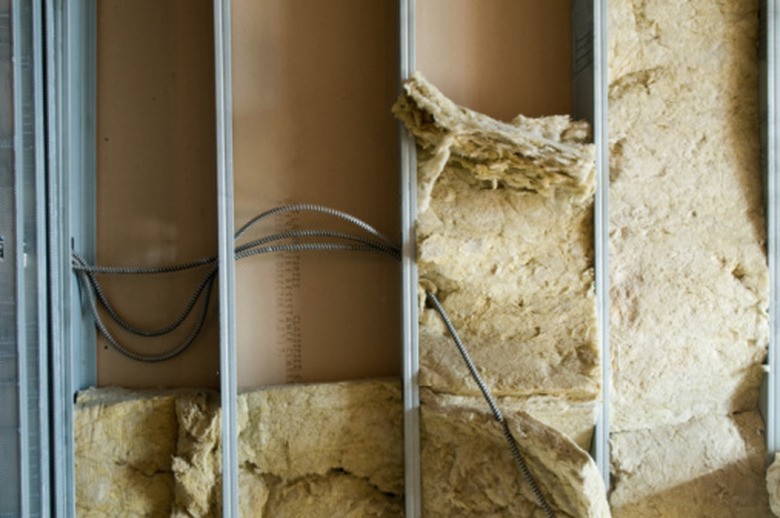How To Convert Metric U Value To Imperial R Value
The rate of heat flowing through a material is determined by the material's R-value or metric U-value. The R-value is measured in the SI, or System International, units of Kelvin meters squared per Watt, or in imperial units, square foot degrees Fahrenheit hours per British thermal unit. The U-value has the inverse of R-value units, Watts per Kelvin meters squared. The greater the U-value or the lower the R-value, the more conductive the material will be. In conversation, the scale of the value implies which system is being used and units are not given.
Step 1
Multiply the U-value by 0.176. At this point, the units will remain the same, Watts per Kelvin meters squared. For example, begin with a U-value of 0.75 Watts per Kelvin meters squared. Multiplying through gives you (0.176)(0.75) = 0.132 Watts per Kelvin meters squared.
Step 2
Divide 1 by the product of 0.176 and the U-value. The factor 0.176 indicates that the R-value is not simply the reciprocal of the U-value since there is a conversion between units as well as the value. In the example above, dividing 1 by 0.132 gives you (1/0.132) = 7.58.
Step 3
Switch the units from the metric Watts per Kelvin meter squared to the imperial square foot degrees Fahrenheit hours per British thermal unit. This will distinguish the American R-value from the metric U-value. Therefore, the U-value 0.75 Watts per Kelvin meters squared translates to an R-value of 7.58 British thermal units per hour per square foot degrees Fahrenheit.
References
Cite This Article
MLA
Leenhouts, Doug. "How To Convert Metric U Value To Imperial R Value" sciencing.com, https://www.sciencing.com/convert-metric-value-imperial-value-8030413/. 24 April 2017.
APA
Leenhouts, Doug. (2017, April 24). How To Convert Metric U Value To Imperial R Value. sciencing.com. Retrieved from https://www.sciencing.com/convert-metric-value-imperial-value-8030413/
Chicago
Leenhouts, Doug. How To Convert Metric U Value To Imperial R Value last modified March 24, 2022. https://www.sciencing.com/convert-metric-value-imperial-value-8030413/
